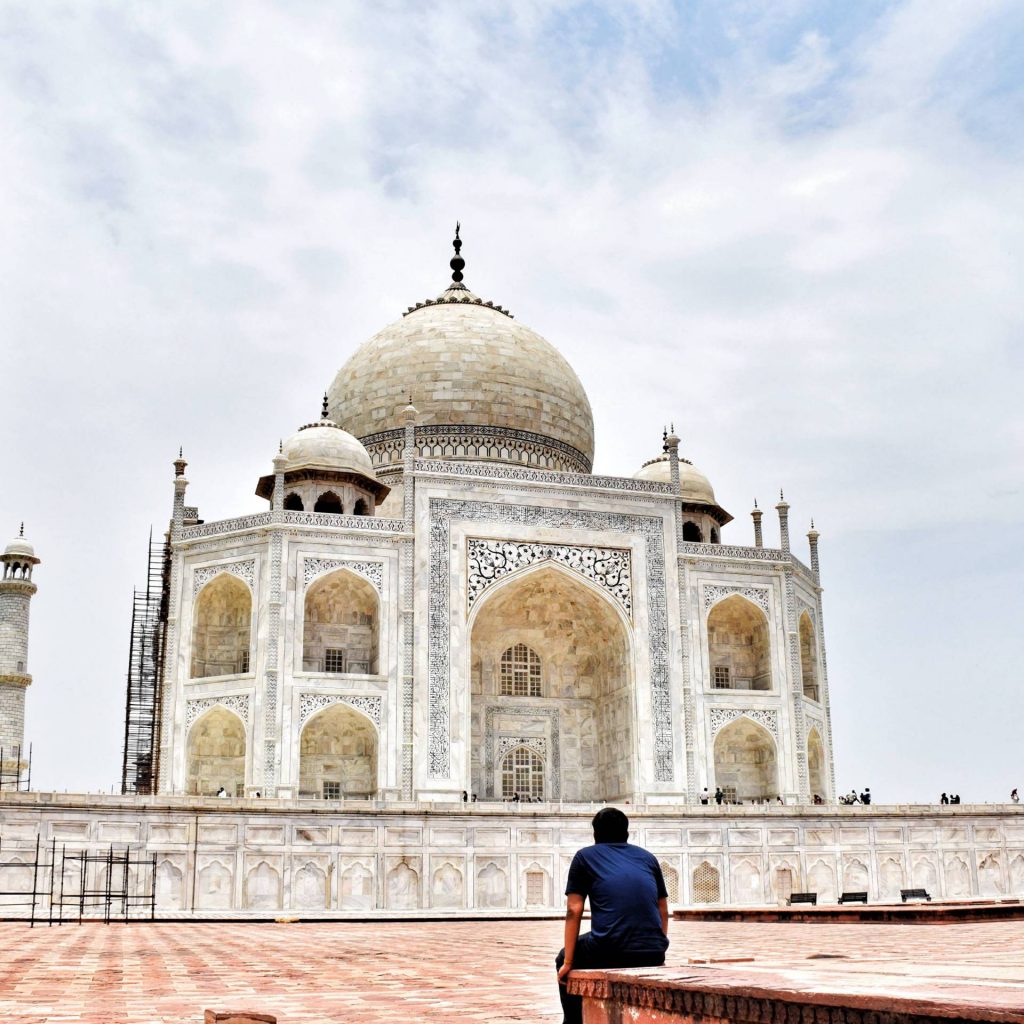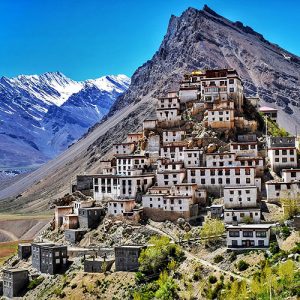Architectural masterpiece and the most visited wonder among all the seven wonders in the world is none other than the “Symbol of love” Taj Mahal. Every year, more than 3 million people come to see humanity’s most wonderful building with their owns eyes.
Under the architectural guidance of “Ustad Ahmed Lahouri” and “Ustad Isa”, Taj was built in 1632. It was commissioned by the then Mughal Emperor “Shahab-ud-din Muhammad Khurram”, better known by his regnal name “Shah Jahan”.

Main Building of Taj Mahal || Four Minarets
Architectural Facts
Taj the architectural jewel of Mughal Architecture combines elements from Persian, Ottoman Turkish and Indian architecture. There was a difference b/w Taj Mahal and other Mughal buildings. Taj was built out of white sandstone inlaid with semi-precious stone, whereas the latter mostly out of red sandstone.
-
The central feature of the building is a royal tomb containing the cenotaph of “Mumtaz Mahal” & “Shah Jahan” though the actual graves lie in the chamber underneath.
-
Taj Mahal is a large, white marble structure standing on a square plinth and consists of a symmetrical building with an Iwan (an arch-shaped doorway) topped by a large dome and finial.
-
The foundation of Taj is made of ebony wood which needs a constant flow of water to remain firm and durable (Yamuna river provides that constant flow of water).
-
One more precise, but the extremely technical detail that was put to use in wooden foundation is that – “it is only the combined action of water and air present in an environment that’s deteriorate the wood. Neither of them alone has the capacity enough to deteriorate the wood by virtue of their action“.
-
A total of 28 types of precious and semi-precious jewels is set in the marble. The turquoise came from Tibet, and jade came from China. Heavy white marble — the principal building material — was transported from Rajasthan.
-
British soldiers pried precious stones from the walls of the Taj Mahal during the Sepoy Rebellion in 1857.
Gardens of Mughal’s
-
“Gardens” they’ve importance in Mughal buildings, the style of garden found in Taj Mahal was “Persian Timurid”.
-
“Babur” first Mughal Emperor brought the concept of paradise garden.
-
According to Islamic belief a paradise exists where there are 4 rivers that flow through a central point, on the mountain. In their ideal form, they’re arranged in a square divided into four equal parts.
-
These rivers are often represented in the Mughal gardens (charbagh) by shallow channels separating the garden in four parts and whose perspectives follow the cardinal points.
-
In the center of these gardens, at the intersection of the divisions, there is the main pavilion or, in the case of the Taj Mahal, a basin marking the holiest place of the place. In the very special case of the Taj Mahal this pavilion has been postponed in the garden and replaced by a pond.

Was it really Love…??

Minaret

Minaret
The calligraphy of the Taj Mahal mainly consists of the verses and passages from the holy book of Quran. Calligraphy was done by inlaying jasper in the white marble panels. Amanat Khan inscribed these passages in an illegible Thuluth script.

Calligraphy of Arabic Ayaat || Main Entrance
The top of Taj Mahal reflects a “Tamga of Mughal Emperor”, a tamga basically means a stamp or seal.

“Finial, tamga of the Mughal Empire”
Shah Jahan – Last days
End years of “Shah Jahan” was not so great. In 1658 he fell ill and appointed his eldest son Dara Shikoh from Mumtaz Mahal as his regent. Dara’s three younger brothers immediately rose up against him and marched on the Agra.
Aurangzeb defeated Dara and his other brothers and took the throne. Shah Jahan then recovered from his illness, but Aurangzeb declared him unfit to rule and had him locked up in the Agra Fort for the rest of his life.
Shah Jahan spent his last eight years gazing out the window at the Taj Mahal in the memory of Mumtaz Mahal.

Mughal Marble Jali at Agra Fort

Taj Mahal view from Jali

“Taj Mahal” as seen from Agra Fort Balcony”













No Comments